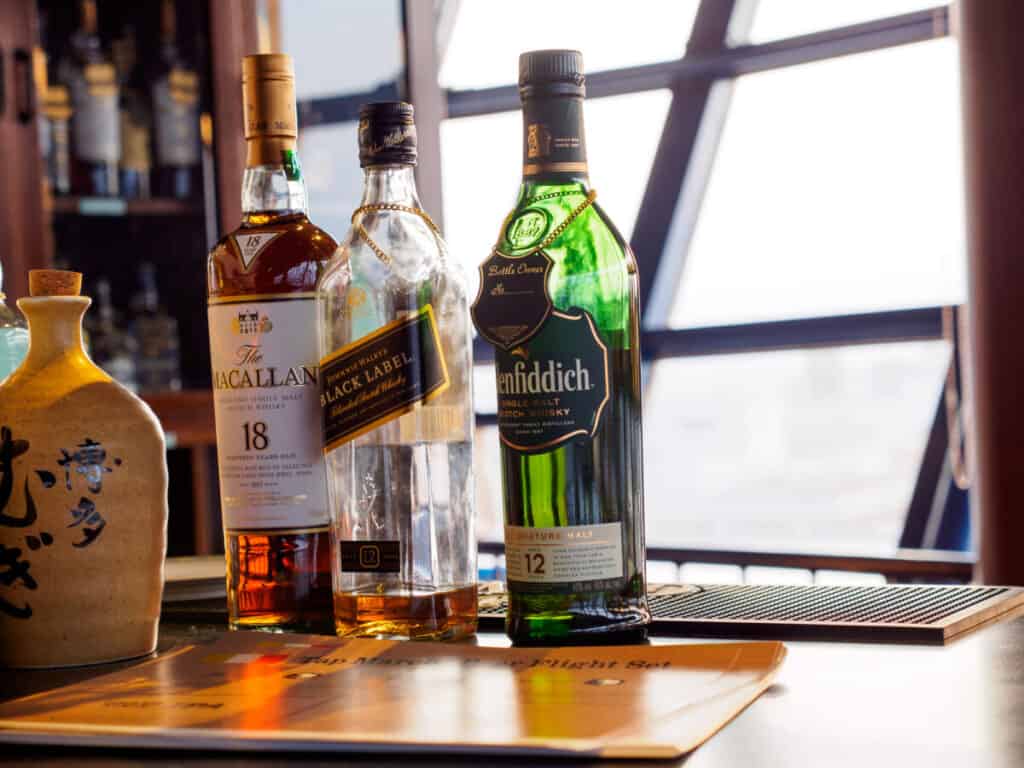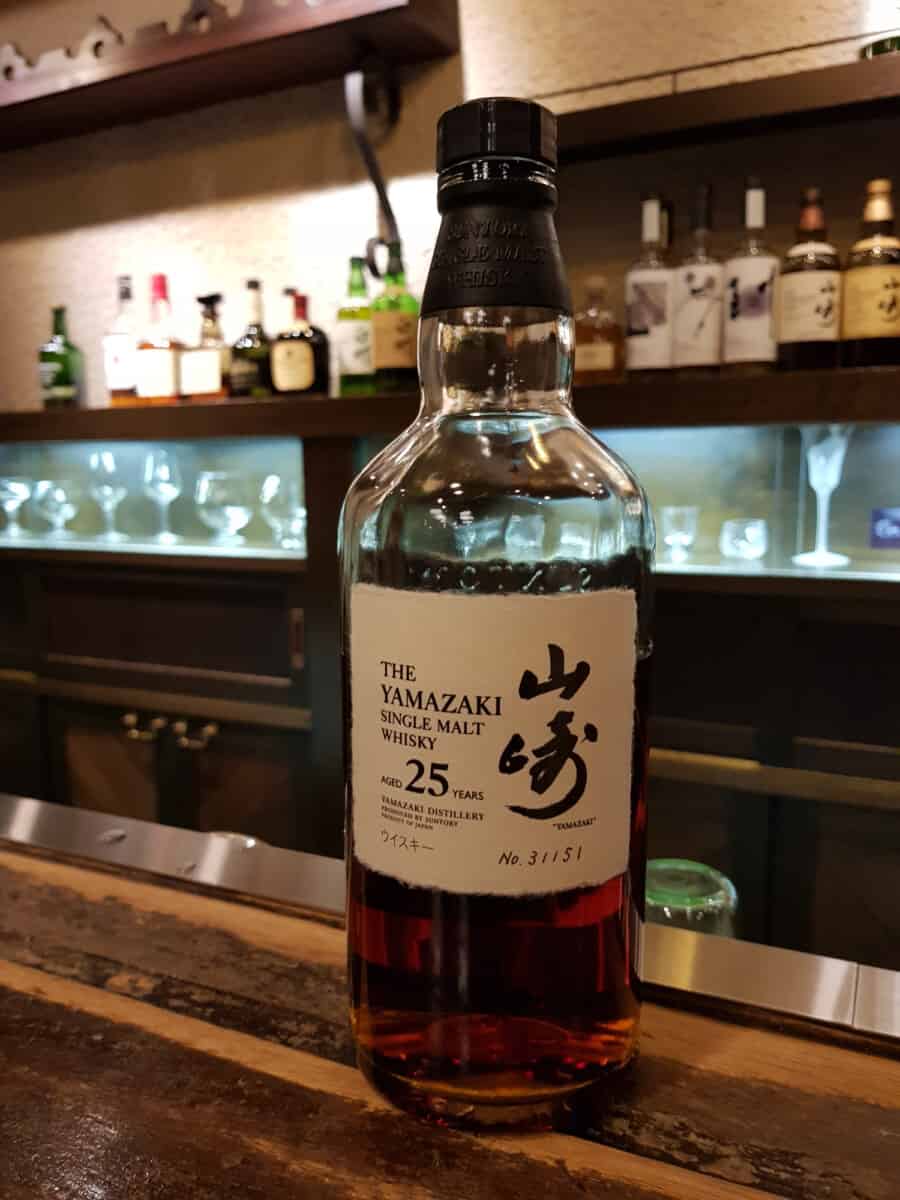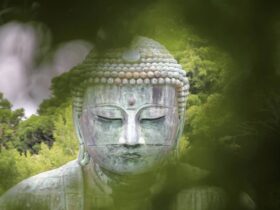While sake is Japan’s most well-known national drink, beer (pronounced “beer-ru”) is the most popular consumed beverage. Kirin, Sapporo, Suntory, and Asahi are among the most broadly available labels.
Alcoholic drinks are referenced countless times in Japan’s first written history, the Kojiki, which was published about fifteen hundred years ago. Sake (rice, water, and the koji mold (Aspergillus oryzae)) is the main three ingredients and originated during the Nara era, according to its manuscripts.
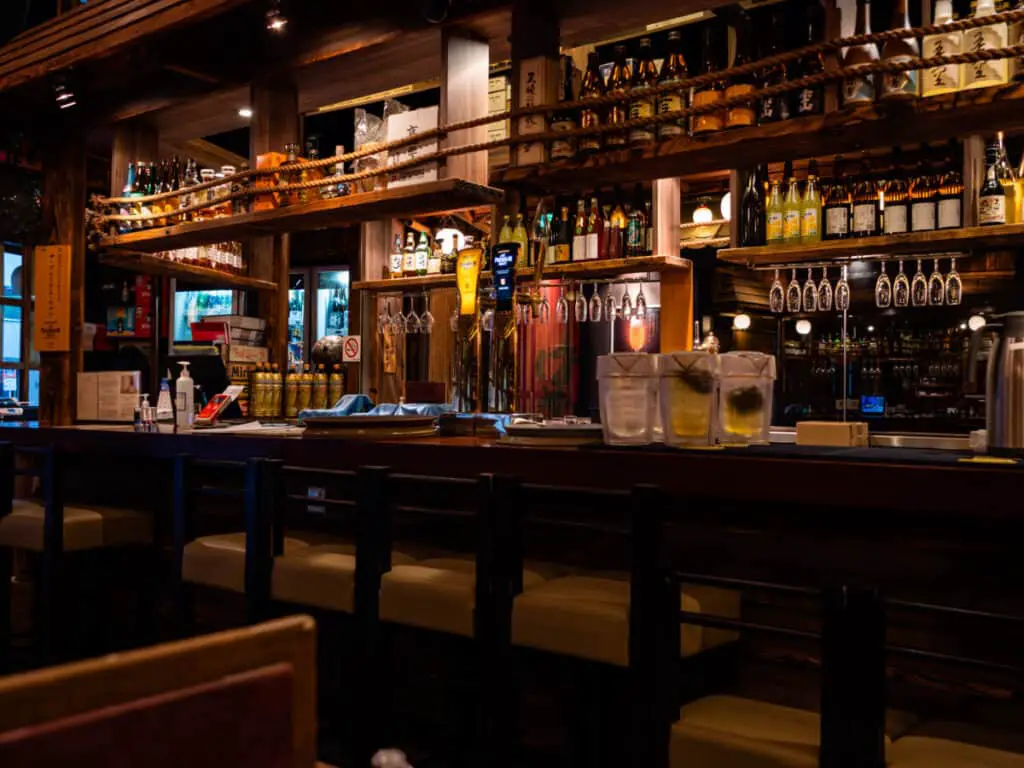
In Japan drinking, alcoholic drinks is somewhat different than the laws often found in most western countries.
Japanese regulations and laws regarding public drinking are generally relaxed. This indicates that drinking in public is legal throughout the country. Anyone can drink alcohol in parks, at train stations, or even on a train, which is considered rude unless the train has normal dining as the shinkansen or overnight trains.
Unlike the United States and a few other western countries, Japan’s legal age of consuming alcohol is twenty rather than twenty-one.
Awamori (Okinawa)
Awamori is an Okinawan alcoholic beverage. It is created from long grain rice and is distilled rather than brewed as beer or sake. Today, most awamori is produced using indica rice supplied from Thailand.
To enrich the flavor and mellowness of Awamori, it is matured in traditional clay pots.
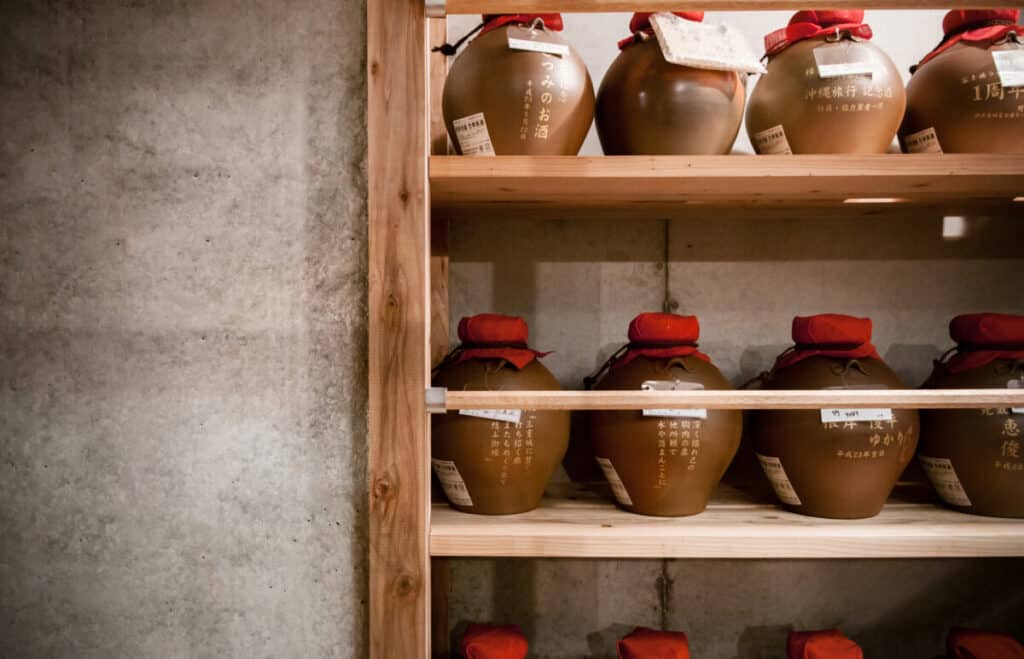
Water with ice is the most common way to consume awamori. When ordered in Okinawan bars or restaurants, it is usually served with a container of ice and a carafe of water. Awamori can be consumed on its own or mixed into cocktails. A kara-kara, a tiny clay jar with a small clay marble inside, was traditionally used to serve awamori.
To signify that the container was empty, the marble would emit a unique “kara-kara” sound. In Okinawan bars and eateries, these containers can still be found.
Island sake is another name for awamori.
The price of awamori grows with the age of the product in general.
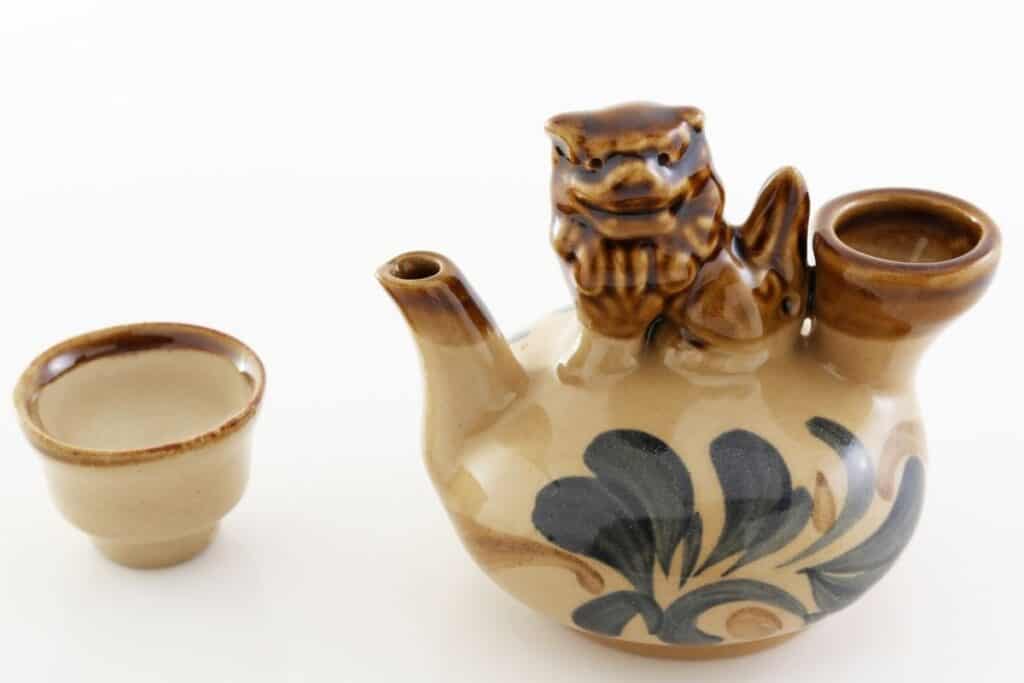
Japanese Whiskey (Single Malt and Blended)
Japanese whiskey is a type of whisky that originated in Japan and is being produced therein presently. The first commercial production of whisky in Japan occurred about 1924, with the establishment of Yamazaki, the nation’s oldest distiller.
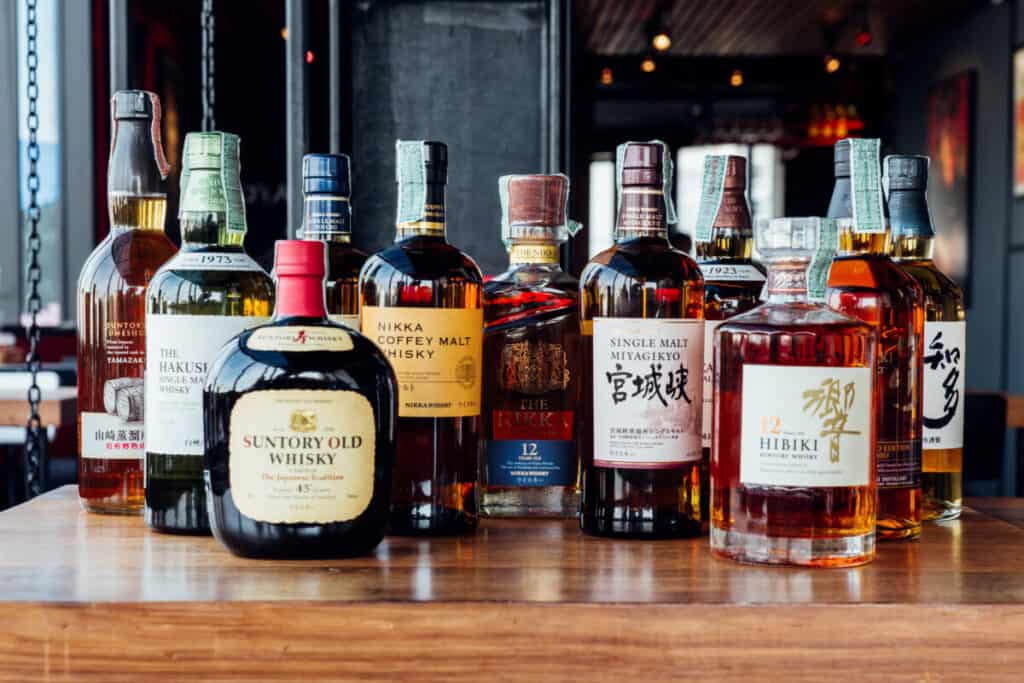
In general, Japanese whiskey has a character that is closely related to Scotch whisky than other main whisky varieties.
In Japan, numerous firms produce whiskey, although Suntory and Nikka are the most well-known and abundant. Both of these companies make blended and single malt whiskies, with Suntory kakubin in a square glass container and Black Nikka Clear being their most popular blended whiskies.
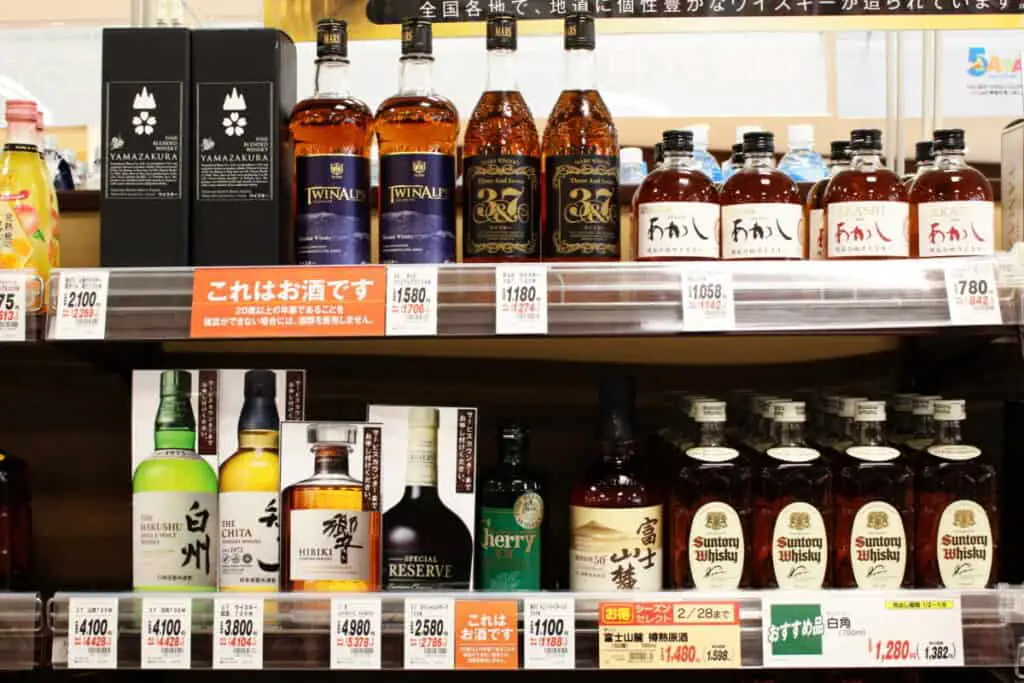
Throughout the year, there are several unique bottlings and limited editions.
Plum wine (umeshu)
Umeshu is a Japanese liqueur created by soaking unripe and green ume plums in liqueur (shochu) and sugar. It has a sweet, sour flavor and a 10–15 percent alcohol concentration. Choya, Takara Shuzo, and Matsuyuki are some of the most well-known umeshu brands. There are several varieties that come with entire ume fruits in the container.
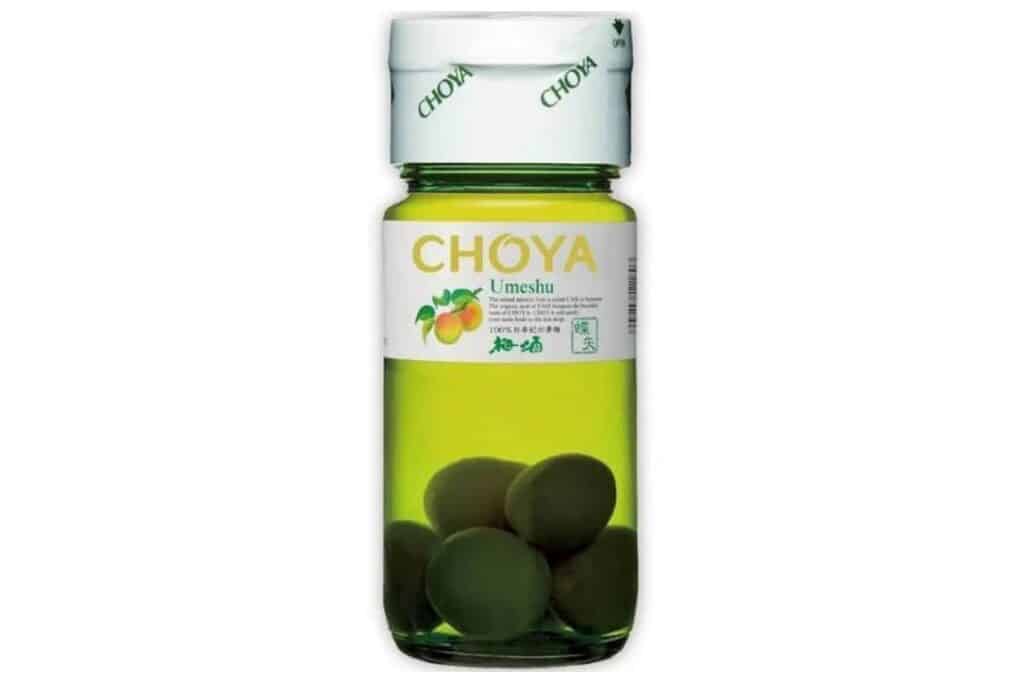
Umeshu is served in a variety of forms at Japanese restaurants, as well as mixed drinks. Popular Umeshu drinks include Umeshu on the Rocks (pronounced umeshu rokku), Umeshu Sour (pronounced umeshu sawa), Umeshu Tonic (made with tonic water), and Umeshu and Soda (made with carbonated water.
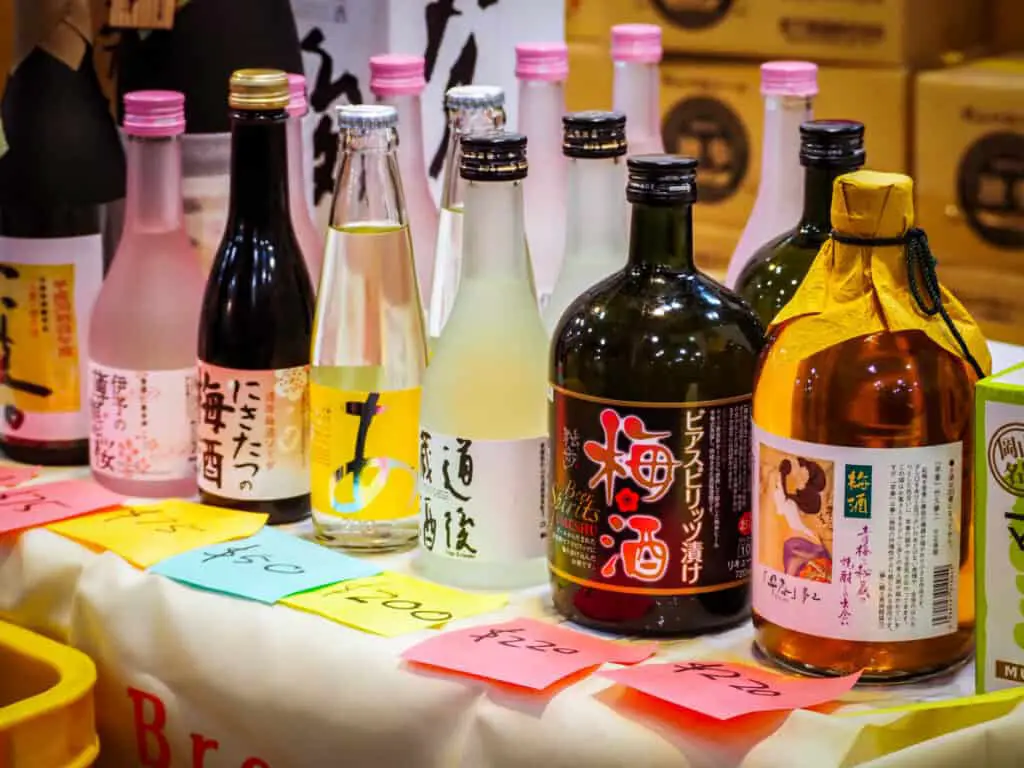
Umeshu can be consumed at a variety of temperatures, including cold or over ice, room temperature, and even served warm in the winter months.
Sake (Rice Wine)
Sake, often defined as Japanese rice wine, is an alcoholic beverage prepared from rice that has been processed to eliminate the husk and then fermented.
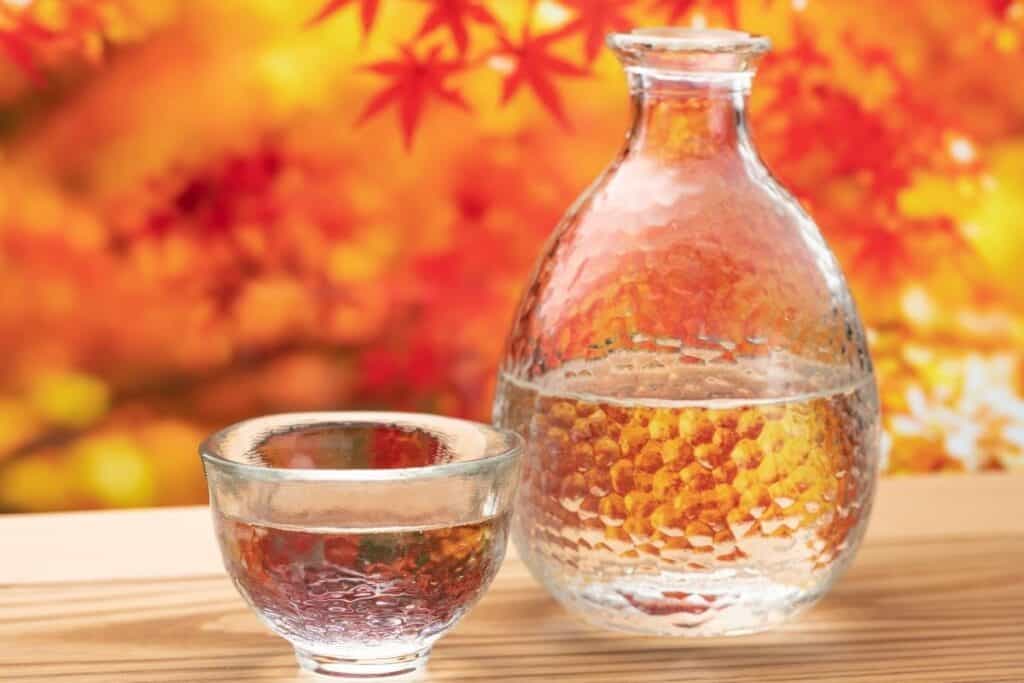
Despite its name, sake is made by a brewing method similar to that of beer, in which starch is turned into sugars, which then ferment into alcohol, while wine is made by fermenting the sugar naturally occurring in fruit, usually grapes.
Sake is frequently served with great ceremony in Japan, where it is slowly warmed in a tiny pottery or porcelain bottle and drank from a small porcelain cup known as a sakazuki. Sake, like wine, has a wide range of suggested serving temperatures.
sake is sometimes served warm, while the better sake is served chilled, according to a pervasive myth.
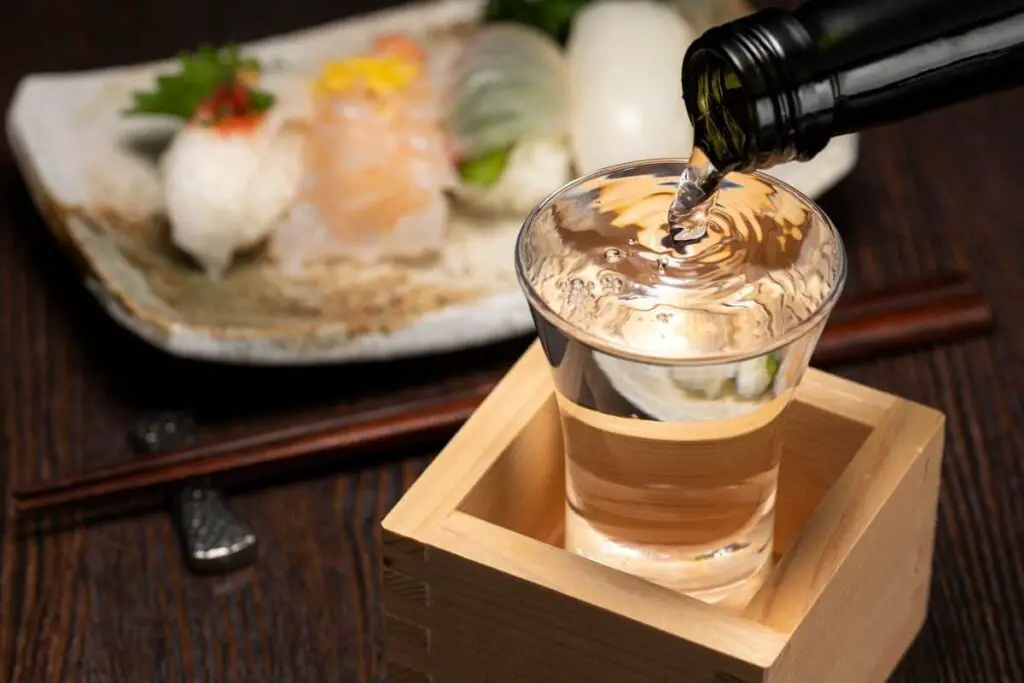
Japanese Beers
Asahi, Kirin, Sapporo, and Suntory are the country’s four largest beer makers, producing predominantly pale-colored light brews with an alcohol rate of roughly 5.0 percent Alcohol. The beverage is extremely popular, with beer consumption among Japanese, vastly outnumbering sake drinking.
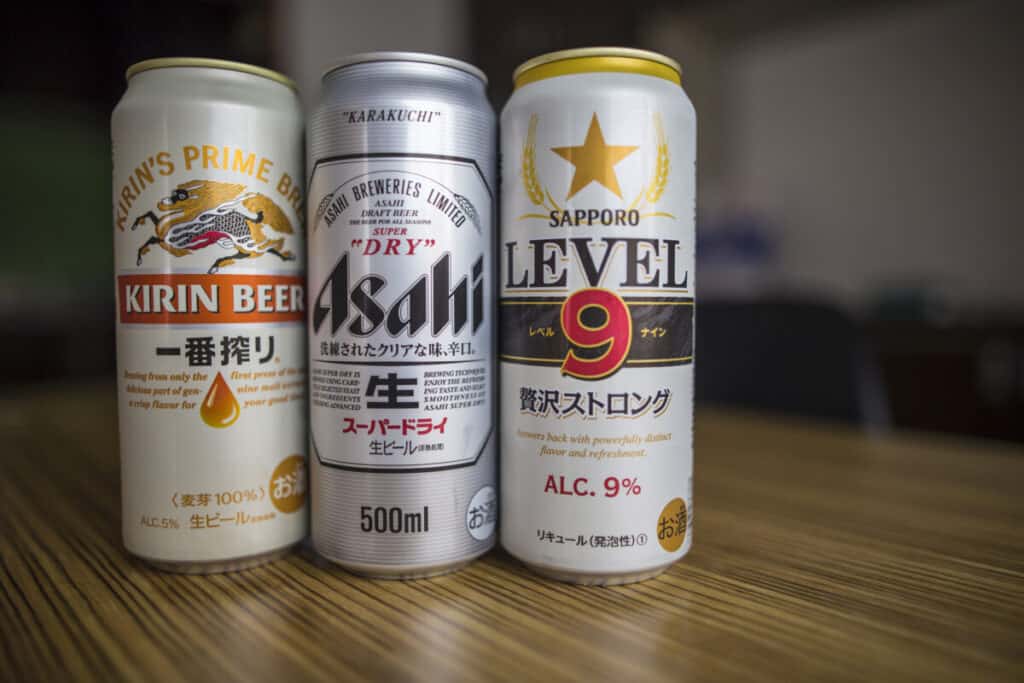
In Japan, pilsner-type lagers have been the most popular beer style.
Since deregulation in 1994, microbreweries have grown in popularity, providing distinct tasting beers in a range of genres that attempt to reflect the focus on workmanship, quality, and ingredient authenticity commonly associated with Japanese cuisine.
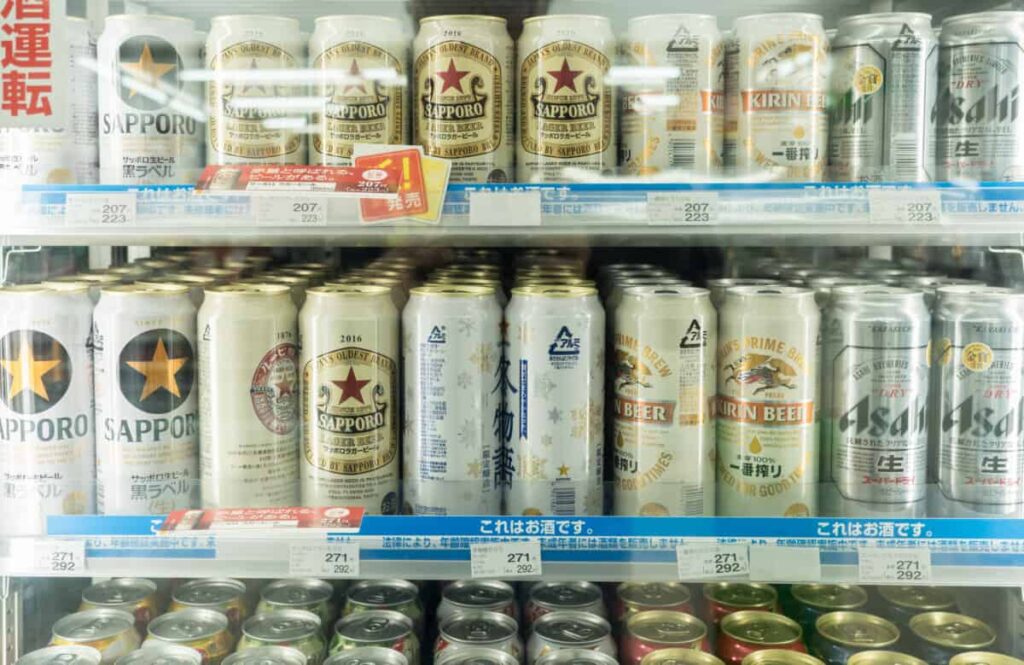
Shochu (Distilled Alcohol)
Shochu is a distilled Japanese alcohol. It’s usually made with rice, barley, sweet potatoes, buckwheat, or brown sugar, but it may also be made from chestnut, sesame seeds, potatoes, or even carrots.
On average, shochu has 25% alcohol by volume, which is less than baijiu, whiskey, or vodka but more than sake, beer or wine.
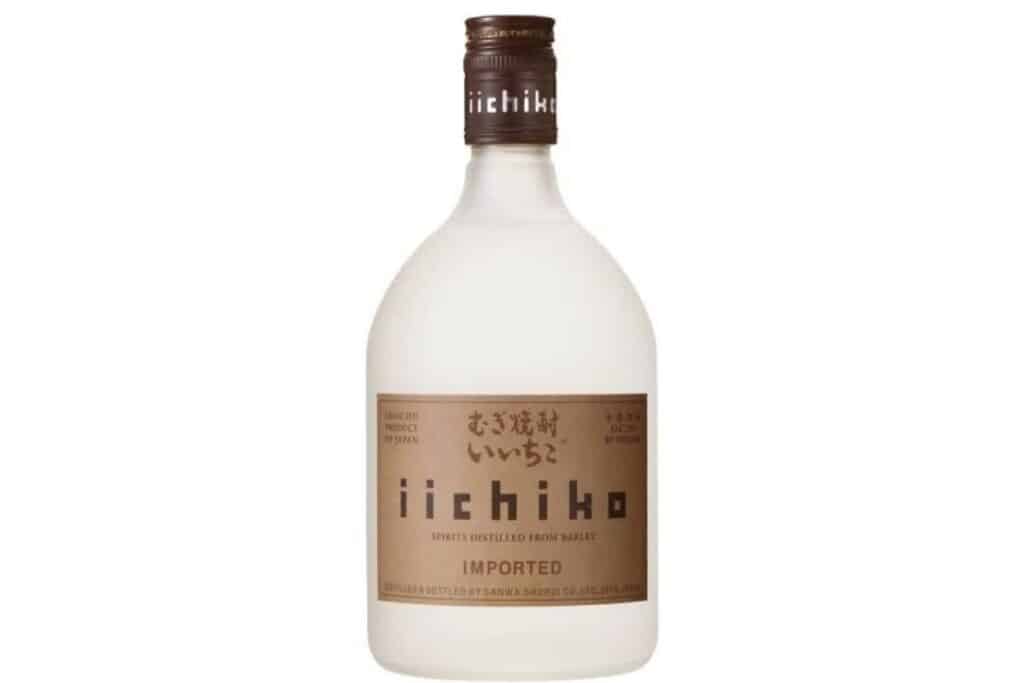
Chuhai (Carbonated Canned Drinks)
Chuhai, also known as Chu-Hi in canned form, is an alcoholic beverage. The term “shochu highball” is abbreviated as chhai. Chuhai is traditionally produced with Barley shochu and carbonated water, however, some modern commercial variations utilize vodka instead of shochu.
Lime, grapefruit, apple, orange, pineapple, grape, grape, kiwi, plum, lemon, peach, strawberry cream, and even cream soda are among the new flavors available.
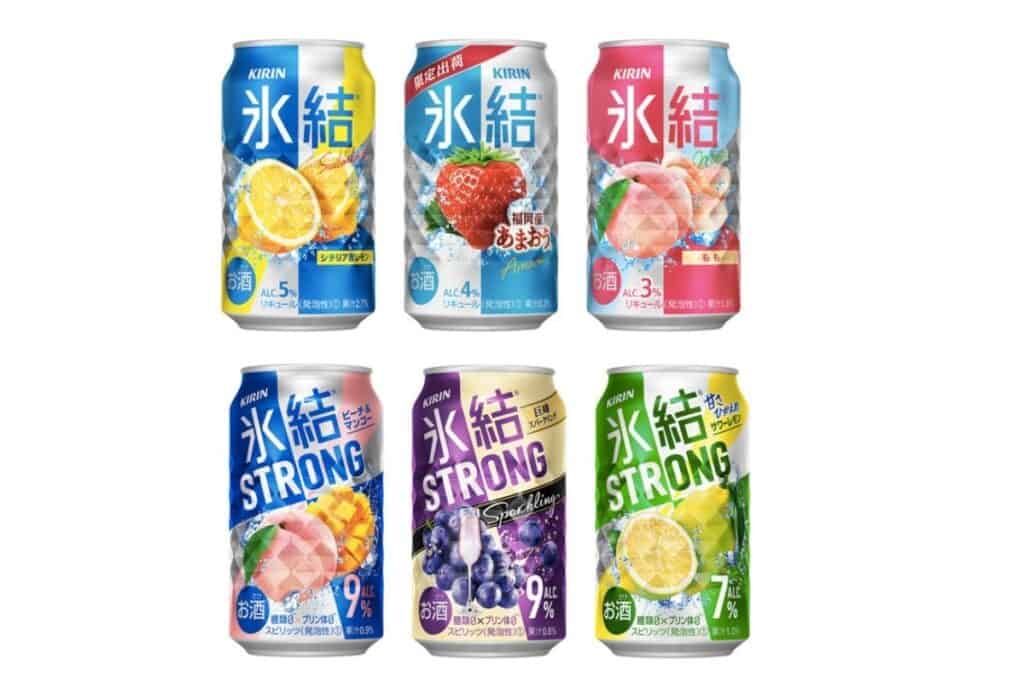
Highball Whiskey Canned Soda
A whiskey highball, often known as a highball, is a carbonated beverage prepared with whisky and carbonated water. The drink, which first proved popular in the mid-20th century, has seen a comeback because of its effective promotion as a beer substitute and is promoted to have fewer carbs and calories.
Highball canned drinks on average have a 5-10% alcohol level and are frequently sold at convenience and grocery stores.
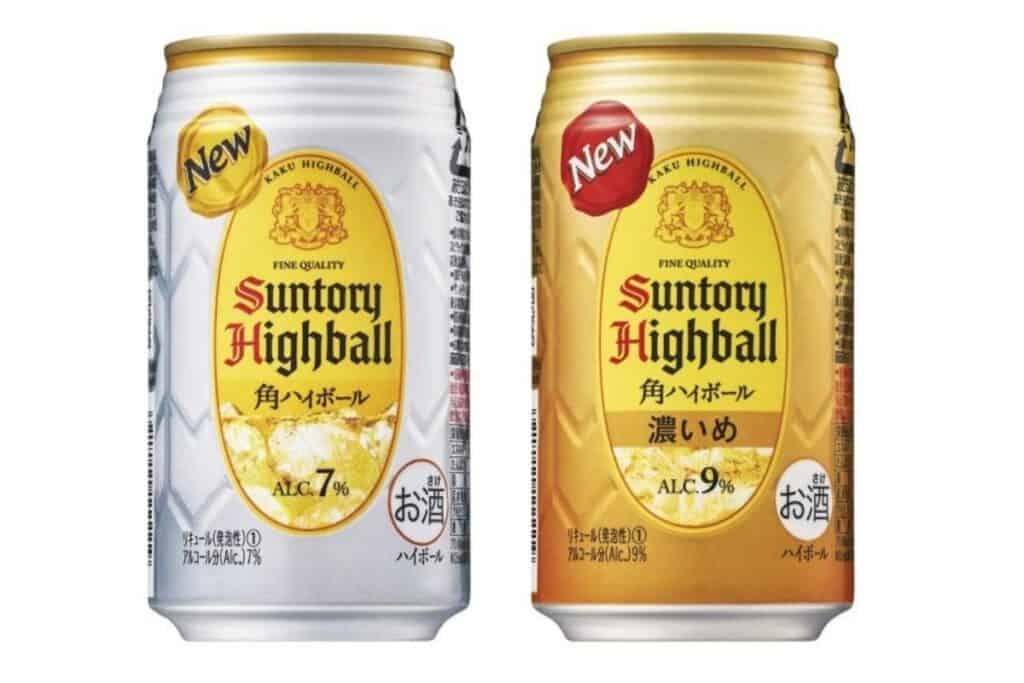
Japanese Wines
Although grape production for general consumption has a long history in Japan, domestic winemaking from locally grown grapes only began with the acceptance of Western culture after the Meiji restoration in the second part of the nineteenth century.
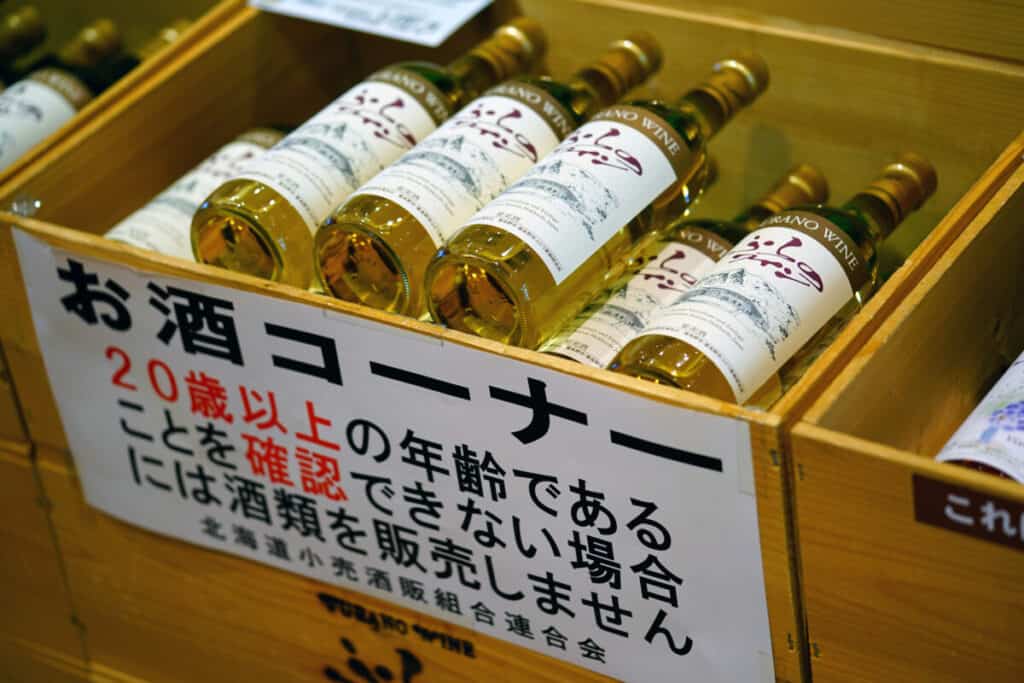
According to the National Tax Agency of Japan, roughly 382,000 kiloliters of wine were purchased in Japan, with imported wine accounting for two-thirds of the total. Only a quarter of the 102,000 kiloliters of wines produced in Japan that year came from grapes cultivated and harvested domestically.
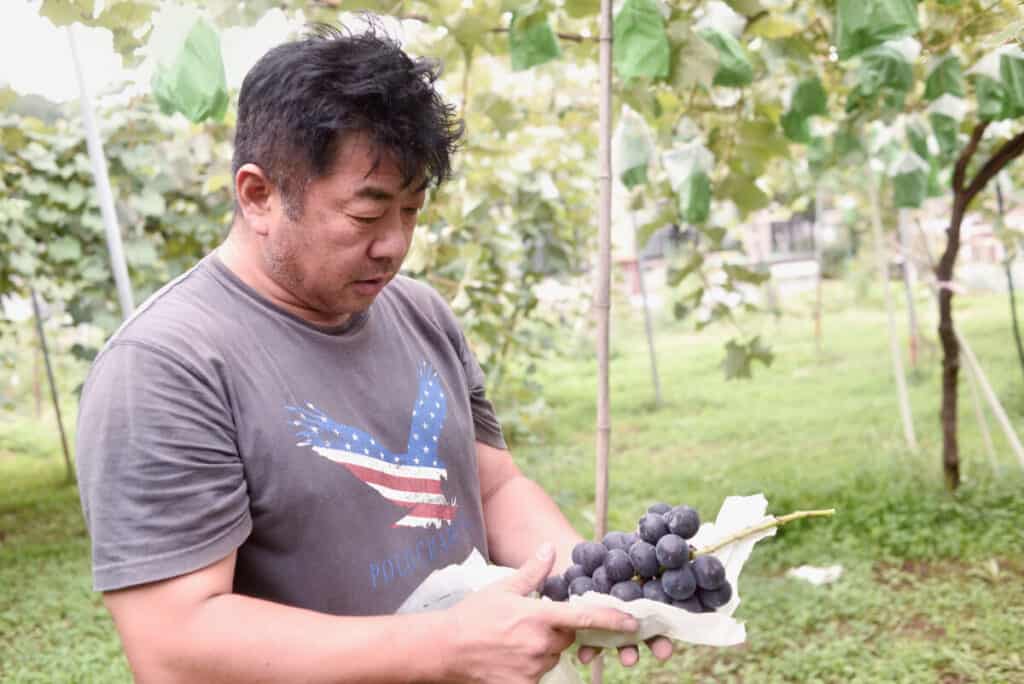
Only 58 kiloliters of Japanese wine were shipped outside of the country.
Although grapes are cultivated and wine is produced in smaller quantities by farmers throughout Japan, spanning Hokkaido to Miyazaki Prefecture on the southernmost island of Kyushu, Yamanashi Prefecture accounts for almost a third of domestic output.
Drinking with coworkers or associates
If you’re drinking in Japan with coworkers or friends, avoid pouring your own drink. Allow those seated nearby to refill your glass is customary. If you’re drinking the same beverage, you should do the same and reciprocate. Don’t compel them to drink anything they don’t want.
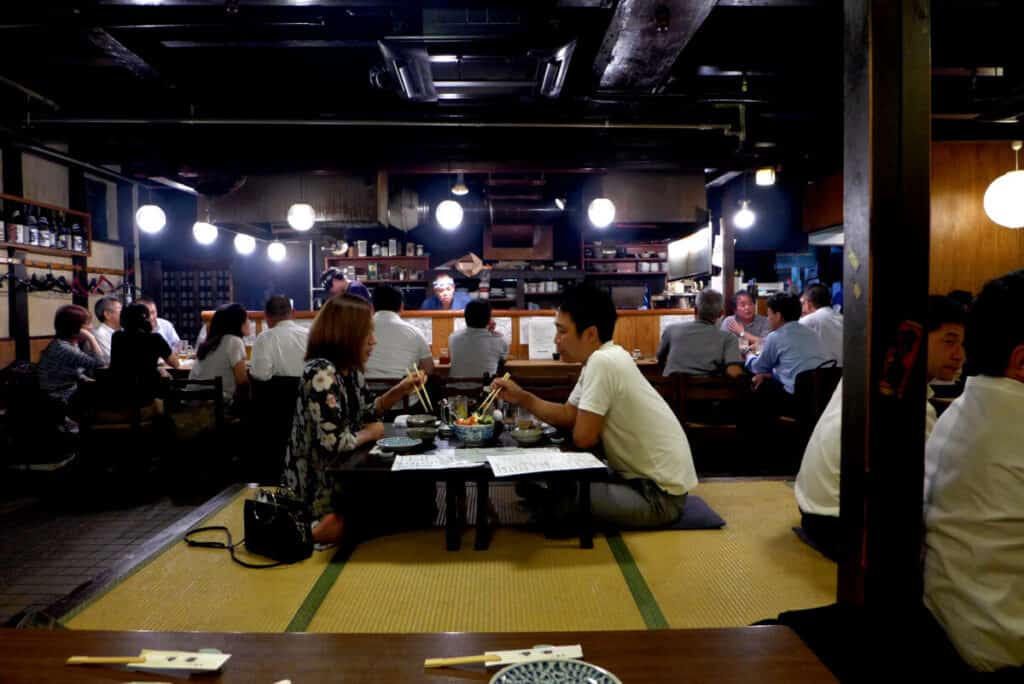
When someone pours you a drink, always thank them. You should have served a drink for everyone there by the conclusion of the night.
The junior or lower-status members of the group (or honored guests) are usually the first to pour for the older colleagues (or honored guests). During business meetings, hierarchies are very noticeable.
When someone fills your glass or sake cup, you may be courteous and attentive by holding the glass in both hands and paying attention to their kind action.
